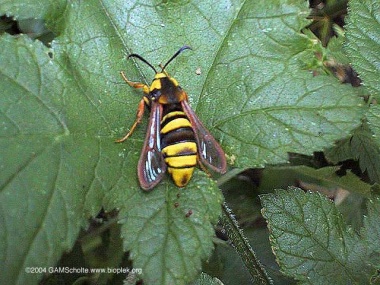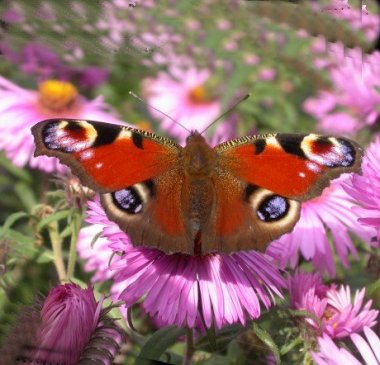
From
Bioplek
In butterflies eye-like spots have evolved in many species because these can cause a shock reaction in birds or other insect eaters. Probably some ancestors happened to have some spots on the wings, enough to make the predators a bit uncertain. These individuals had some advantage of the spots and therefore this (hereditable) trait stayed in the gene pool. After a number of generations nearly every specimen of the species had these spots in the wings. Next natural selection was increasing the effects by modelling the spots more and more like eyes. Until even the little lights in the eyes were imitated! (Move the cursor over the picture).
Know more?
Mimicry, camouflage and warning coloration
Mimicry
Mimicry is also the phenomenon that poisonous animals often show vivid colours: warning colours. In this way predators are warned not to eat these animals, which is favourable for both parties. As a consequence also some harmless animals evolve vivid colours, giving them a certain protection.
Know more?
Hornet
Moth
